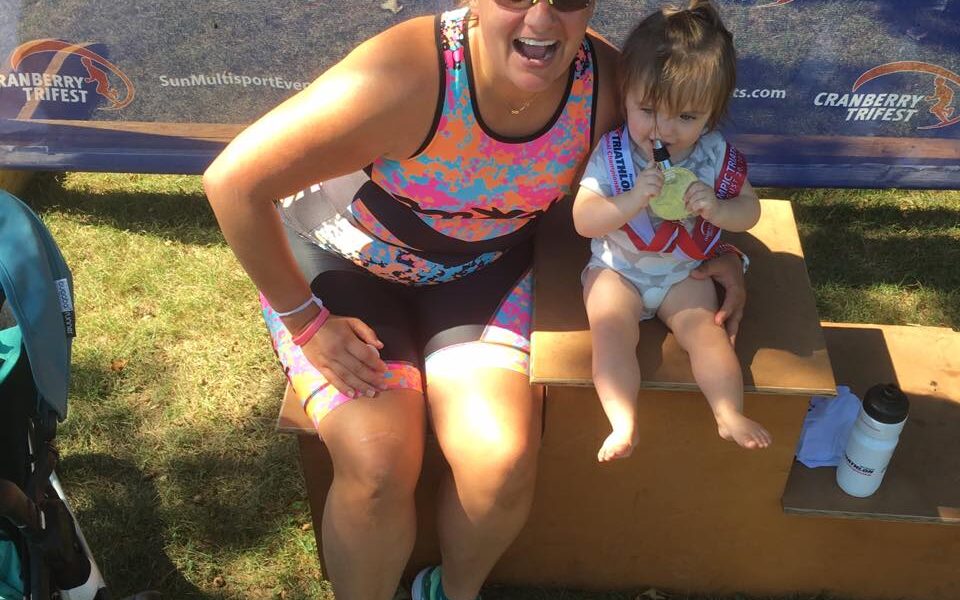I was recently texting with an athlete who had been dealing with miscarriage. She sent me a message that really resonated — “If this experience has taught me anything, it’s to not put training on hold for babies and to not put babies on hold for training.” The past four plus years I personally have been navigating training while pregnant, trying to get back into being competitive with an infant and toddler, and working to accept where I am right now. Spoiler alert: it’s really difficult. Setting aside all the societal baggage placed on pregnant women, new mothers, and, well, mothers generally, just figuring out how sport fits into your life post-baby is fraught with landmines. As I navigate this, and as I help my athletes navigate this, here are a few things I have learned (and I assure you, I still have quite a bit to learn as well):
Social Media Is Not Real Life
So while this applies to pretty much everything, I think it’s a particularly difficult lesson for new mothers. There are some women who appear to bounce back from pregnancy and childbirth instantly and apparently to effortlessly regain their prior fitness (think the instagram captions showing a beaming new mother on a trainer noting that 3 weeks postpartum she’s set a new FTP and is riding 12 hours a week). While some women are able to do this, most are not. We tend not to share our failures (or perceived failures) on social media, so the picture we see is most often rosy. Even for the small percentage of women who are superstars and killing it with a three month old, we often don’t see the struggles they are going through as well. Sometimes we all need the reminder that social media is no ones actual reality.

Planning Is Often Wishful Thinking
The corollary to social media is not real life is that when you are in the throes of trying to get pregnant, pregnancy, and early motherhood, the best laid plans often go awry. That’s ok. It would be amazing if family planning worked out perfectly — I’ve had athletes say things like, I’m going to do IRONMAN Florida in November, be pregnant by January, have a baby in the fall and be back rearing to go the next spring. While it would be amazing if things worked out that way, most often they do not. We tend to be optimists about a lot of things — how long it will take to get pregnant, whether you will have to deal with miscarriages, how easy pregnancies will be, how quickly we’ll bounce back.
Its not bad to be an optimist, but we also need to be prepared to show ourselves a little grace when plans don’t quite work out. I had a fairly easy time getting pregnant despite being 34. But my pregnancy was miserable. I feel (yes, I know this is not true but its how I felt) like I was the only woman who could vomit on a daily basis through my third trimester and still gain 40 pounds during pregnancy. My plans of doing all the training (especially in my first trimester) were scuttled by the fact that most days I spent my morning training time vomiting. This isn’t to say give up on endurance sports during pregnancy and the little years but rather be prepared to be flexible, to change plans, to re-work expectations and to re-focus on what you can do. If you’re prepared that flexibility may be needed, its a lot easier to modify plans and expectations while you’re in the thick of it.

Your Body: Expectation Versus Reality
Let me first say body image issues and societal expectations about bodies (especially women’s bodies) are INCREDIBLY difficult to deal with. On second thought, incredibly difficult is probably an understatement. I think as athletes many of us expect that getting back to our pre-pregnancy bodies will be easy. We’ll nurse, do some core work and presto chango, it will be like we never had a baby. While some women do experience this many women struggle with the internal and external impacts of pregnancy for much longer periods of time.
For many of us, myself included, weight that was hard to move pre-pregnancy has become impossible post-pregnancy. I dread visits to medical professionals because I can’t handle the “you should watch your diet and exercise more” talk without actually inquiring into what my diet looks like (pretty good but not perfect) and what my current exercise load is (at the moment around 12-14 hours per week). I strongly believe that what your body can do is much more important than how it looks and that all bodies can be athletic bodies. I also know that’s hard to accept and believe — everyone (myself included) has work to doing on showing themselves and others grace.
While some of us wear our struggles on the outside, there are also numerous women who “look” fine but struggle internally whether they are dealing with the long term impacts of diastasic recti , general loss of core stability, new ailments brought on many hormone changes or the mental health struggles that often accompany pregnancy, child birth and the little years. Whether or not people are public with these struggles, they’re real, and they exist.
Grace Is Not Easy
The repeated theme of this post (and the repeated theme of lots of conversations I have with athletes) is to give yourself a little grace. Easier said than done. There’s no magic bullet for giving yourself grace, for filtering out images and posts and social media that makes you feel bad, for learning how to not compare yourself to others or the “prior” you (I hate #transformation posts, but that’s a whole different topic). All I can say is it takes practice. Just like you train your swim, bike and run, you also have to train your ability to show grace and have personal acceptance. Little by little, day by day. It may not be perfect, nothing is, but with practice it does get better.





